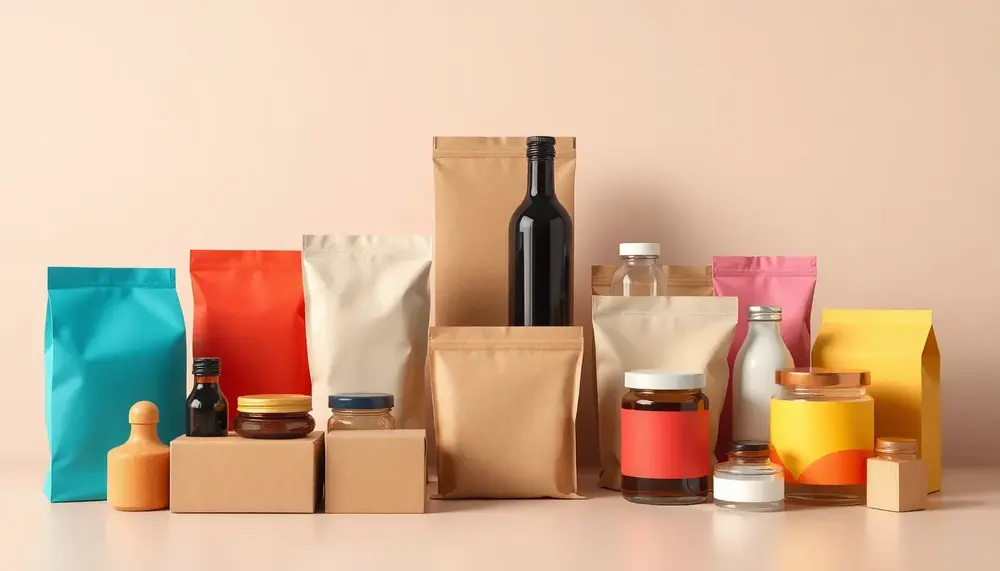Table of Contents:
The Dual Role of Packaging: Protection and Persuasion
Packaging isn’t just a shell; it’s a silent force shaping perception and purchase in one fell swoop. On the one hand, it’s the frontline defender—keeping products safe from damage, contamination, or tampering during transit and storage. But here’s the kicker: that same protective layer is also your brand’s most immediate marketing tool, working overtime to persuade shoppers right at the shelf.
Let’s get practical. When packaging does its job well, products arrive intact, fresh, and appealing—no one wants dented cans or leaky bottles. Yet, what often gets overlooked is how these functional choices (think: sturdy materials, smart seals, or tamper-evident closures) send subtle signals of quality and reliability. Customers might not consciously notice a perfectly engineered box, but they sure remember when something goes wrong. In this way, protection quietly builds trust.
Now, flip the coin. The persuasive power of packaging is immediate and visceral. It’s the first thing people see, touch, and judge. Color, texture, and even the sound of an opening seal can spark curiosity or trigger a sense of premium value. Clever packaging design—maybe a box that unfolds like a gift or a bottle with a satisfying click—creates a mini-experience, nudging buyers closer to “yes.”
But here’s where it gets interesting: the best packaging strategies blend these two roles seamlessly. Brands that master this duality don’t just keep products safe—they make every unboxing a brand moment, every shelf a stage. The result? Products that stand out, build trust, and turn a simple container into a persuasive marketing asset.
Leveraging Packaging Design for Brand Differentiation
Standing out in a crowded market is no accident—distinctive packaging design is often the ace up a brand’s sleeve. The clever use of shape, color, and material can instantly set a product apart, making it memorable long after the first glance. Brands that dare to break the mold—literally—by introducing unconventional silhouettes or tactile finishes don’t just attract attention; they create a sensory signature that’s hard to imitate.
Consider the strategic use of visual cues. A bold, unexpected color palette or a custom font can become synonymous with your brand, making it recognizable even from a distance. It’s not just about looking different for the sake of it; every design element should reinforce the brand’s personality and values. For example, minimalist packaging with clean lines and muted tones might signal sophistication, while playful graphics and vibrant hues suggest fun and approachability.
- Material selection can speak volumes. Recycled cardboard, embossed glass, or soft-touch coatings all communicate subtle messages about quality, sustainability, or luxury.
- Functional innovation—like easy-pour spouts or modular packaging—adds practical value, making the brand experience unique and user-friendly.
- Storytelling through design transforms packaging into a narrative device. Limited editions, local artist collaborations, or cultural motifs invite consumers to connect emotionally with the brand.
Ultimately, brands that invest in thoughtful, original packaging design don’t just differentiate their products—they carve out a unique space in the consumer’s mind, building loyalty that goes far beyond the shelf.
Pros and Cons of Using Packaging as a Marketing Tool
| Pros | Cons |
|---|---|
| Enhances brand visibility and differentiation at the point of sale | Increased costs for innovative or premium packaging materials and design |
| Serves as a direct communication channel for storytelling, promotions, and customer engagement | Risk of overdesign—complicated packaging may hinder user experience or accessibility |
| Builds consumer trust through quality, protection, and functional features | Environmental concerns if not using sustainable, eco-friendly solutions |
| Strengthens loyalty by creating memorable unboxing and personalized experiences | Packaging innovation may require collaboration across multiple teams, increasing complexity |
| Encourages social sharing and word-of-mouth via distinctive and interactive designs | Measuring ROI can be challenging without defined metrics and tracking systems |
Optimizing the Consumer Experience Through Innovative Packaging
Innovative packaging is a game-changer for consumer experience, transforming ordinary product interaction into something memorable and even delightful. The magic happens when packaging goes beyond mere aesthetics and becomes intuitive, accessible, and interactive. Think about it: frustration-free unboxing, clever resealable features, or packaging that doubles as a storage solution—these are the small touches that make a big difference in daily life.
- Personalization: Customizable packaging—like QR codes unlocking exclusive content or names printed on labels—lets consumers feel uniquely valued. This sense of personal connection can turn a routine purchase into a moment of joy.
- Accessibility: Easy-grip designs, large-print instructions, and tactile cues make products more inclusive, especially for people with limited dexterity or visual impairments. When packaging is easy to handle, it removes barriers and fosters loyalty.
- Multi-functionality: Packaging that serves a second purpose—such as a jar that becomes a drinking glass or a box that folds into a display—adds unexpected value. Consumers appreciate brands that think beyond single-use, offering solutions that fit into their lifestyles.
- Interactive technology: Smart packaging with NFC chips or augmented reality features invites users to engage with the brand in new ways, whether it’s tracking product origin or accessing how-to videos. This tech-savvy approach builds excitement and deepens brand engagement.
In short, innovative packaging is not just about standing out—it’s about making every touchpoint with the product smoother, smarter, and more enjoyable for the consumer.
Driving Sustainability Through Eco-Friendly Packaging Solutions
Eco-friendly packaging is more than a trend—it’s a strategic lever for brands aiming to future-proof their business and win consumer trust. Companies that prioritize sustainability in packaging are responding to growing regulatory pressures and shifting customer expectations, but the benefits run deeper than compliance or reputation management.
- Material innovation: Bioplastics, mushroom-based packaging, and plantable seed paper are revolutionizing the industry. These materials not only reduce reliance on fossil fuels but also offer new storytelling opportunities for brands.
- Supply chain efficiency: Lightweight, compact packaging designs cut transportation emissions and lower shipping costs. Optimizing packaging dimensions can also reduce the need for secondary packaging, streamlining logistics from warehouse to shelf.
- Consumer empowerment: Clear instructions for recycling or composting, along with transparent sourcing information, enable customers to make informed, responsible choices. This builds a community of brand advocates who value environmental stewardship.
- Lifecycle thinking: Brands adopting closed-loop systems—such as refillable containers or take-back programs—demonstrate a commitment to minimizing waste across the entire product journey. This approach not only reduces landfill impact but also fosters ongoing customer relationships.
Ultimately, sustainable packaging isn’t just about reducing harm—it’s about actively creating value for both the planet and the business.
Packvertising: Turning Packaging Into a Strategic Advertising Channel
Packvertising flips the script on traditional advertising by transforming packaging into a direct, high-impact communication channel. Instead of relying solely on billboards or digital ads, brands can leverage every inch of their packaging to tell stories, spark curiosity, and prompt action—right at the moment of purchase or unboxing.
- Dynamic messaging: Rotating campaign graphics, limited-edition artwork, or seasonal themes keep packaging fresh and encourage repeat purchases. This adaptability allows brands to stay culturally relevant and responsive to trends.
- Cross-channel integration: QR codes, hashtags, or social media handles printed on packaging bridge the gap between offline and online engagement. Consumers are nudged to share their experiences, participate in contests, or access exclusive digital content, amplifying reach organically.
- Collaborative branding: Strategic partnerships—like co-branded packaging with influencers, artists, or other companies—open new audiences and inject novelty into the product experience. These collaborations often generate buzz and media coverage, multiplying marketing impact.
- Real-time feedback loops: Packaging can prompt customers to leave reviews, complete surveys, or join loyalty programs. This immediate call-to-action transforms a passive interaction into an ongoing brand relationship.
By treating packaging as a living, evolving advertising platform, brands unlock new ways to connect, engage, and convert—often at a fraction of the cost of traditional media.
Maximizing Point-of-Sale Impact With Distinctive Packaging
Capturing attention at the point of sale hinges on packaging that disrupts shopper routines and triggers impulse decisions. Distinctive packaging doesn’t just sit quietly on the shelf—it commands presence, leveraging visual hierarchy and unexpected design elements to draw the eye even in a sea of competitors.
- Strategic shelf blocking: Coordinated packaging across a product line creates a visual “block” that dominates shelf space, guiding consumers’ gaze and reinforcing brand cohesion.
- Contrasting textures and finishes: Combining matte and gloss, metallic foils, or even tactile embossing encourages shoppers to reach out and physically interact, turning curiosity into engagement.
- Localized cues: Region-specific graphics, languages, or cultural motifs make products feel tailored to the store’s demographic, boosting relevance and connection in diverse retail environments.
- Limited-edition cues: Packaging that signals scarcity—through numbered batches, unique colorways, or “only here” messaging—creates urgency and drives immediate action.
- Retailer collaboration: Custom packaging for exclusive in-store promotions or seasonal campaigns aligns brand goals with retailer priorities, securing premium placement and enhanced visibility.
Ultimately, packaging that maximizes point-of-sale impact is never generic; it’s a calculated tool that turns passing glances into decisive purchases, giving brands a measurable edge where it matters most.
Integrating Packaging Strategies Into Multi-Channel Marketing
Integrating packaging into multi-channel marketing isn’t just a nice-to-have—it’s a competitive necessity for brands seeking seamless, memorable customer journeys. When packaging strategies are woven into the broader marketing ecosystem, every touchpoint reinforces brand messaging and amplifies campaign effectiveness.
- Unified storytelling: Align packaging visuals and messaging with ongoing campaigns across digital, print, and in-store channels. Consistency in color palettes, taglines, and imagery ensures customers recognize the brand instantly, whether they see an Instagram ad or pick up the product in-store.
- Omnichannel call-to-action: Use packaging to direct consumers to specific online experiences—such as loyalty programs, product tutorials, or social media communities—by including unique URLs or campaign codes. This approach bridges offline and online engagement, increasing participation and data collection.
- Personalized follow-up: Integrate packaging-triggered data (like scanned QR codes or registration incentives) into CRM systems to deliver targeted offers or content post-purchase. This enables brands to nurture relationships and encourage repeat business with tailored communications.
- Event and influencer synergy: Design special edition packaging for product launches, pop-up events, or influencer collaborations. These limited runs can be promoted across channels, creating buzz and encouraging user-generated content that feeds back into the marketing loop.
When packaging becomes an active participant in multi-channel strategies, it transforms from a static container into a dynamic brand amplifier—driving engagement, loyalty, and measurable results across every platform.
Case Studies: Brands Leveraging Packaging for Marketing Success
Real-world examples show just how transformative smart packaging can be for brand growth and customer loyalty. Let’s dive into a few standout cases where packaging played a starring role in marketing success.
- Happy Socks: This Swedish brand turned simple sock boxes into collectible art pieces. Each season, they collaborate with artists to create limited-edition packaging that fans actively seek out. The result? Social media buzz and increased repeat purchases, as customers want to own every new design.
- Roseshire: Luxury flower delivery company Roseshire crafts elaborate, story-driven packaging for its roses. Boxes open like books, revealing messages and intricate designs that elevate the unboxing into a memorable event. This attention to detail has fueled viral unboxing videos and positioned Roseshire as a premium gifting choice.
- Method: The eco-friendly cleaning brand uses distinctive bottle shapes and vibrant colors to stand out in a crowded market. Their packaging not only signals sustainability but also looks good enough to display on countertops, turning everyday products into conversation starters and boosting word-of-mouth referrals.
- Innocent Drinks: Innocent’s playful, conversational packaging copy—think witty messages and quirky illustrations—creates a sense of personality and approachability. This tone has built a loyal following and encourages customers to share photos of their drinks online, organically expanding the brand’s reach.
These brands prove that when packaging is treated as a core marketing asset, it can spark conversation, drive engagement, and turn casual buyers into devoted fans.
Measuring the ROI of Packaging as a Marketing Tool
Quantifying the return on investment (ROI) for packaging as a marketing tool demands a data-driven approach that goes beyond surface-level impressions. Brands need to establish clear metrics and trackable outcomes to justify packaging investments and optimize future strategies.
- Sales Uplift Analysis: Compare sales data before and after packaging redesigns or campaigns. A/B testing in select markets can isolate the impact of new packaging on conversion rates and average order value.
- Customer Acquisition and Retention: Monitor changes in new customer acquisition rates and repeat purchase frequency linked to packaging initiatives. Packaging that encourages social sharing or loyalty program sign-ups can be tracked through unique codes or referral links.
- Brand Perception Surveys: Conduct pre- and post-launch surveys to gauge shifts in consumer perceptions of quality, trust, and brand differentiation attributed to packaging changes.
- Engagement Metrics: Measure online engagement—such as unboxing video shares, hashtag usage, or QR code scans—to assess how packaging drives digital interaction and word-of-mouth.
- Cost-Benefit Analysis: Weigh the incremental costs of premium materials or design enhancements against measurable gains in sales, customer loyalty, and reduced marketing spend elsewhere.
By rigorously tracking these metrics, brands can make informed decisions, refine packaging strategies, and ensure every dollar spent delivers tangible marketing value.
Actionable Steps to Harness Packaging for Competitive Advantage
To truly gain a competitive edge through packaging, brands must move beyond surface-level tweaks and adopt a strategic, systematic approach.
- Audit your category’s packaging landscape: Map out competitors’ packaging styles, messaging, and innovations. Identify whitespace opportunities—gaps where your brand can introduce something genuinely novel or more relevant to target audiences.
- Involve cross-functional teams early: Bring together marketing, design, logistics, and sustainability experts from the outset. This ensures packaging aligns with brand goals, operational realities, and evolving consumer expectations.
- Prototype and test iteratively: Develop several packaging concepts and conduct real-world tests with actual customers. Gather feedback on usability, emotional response, and shelf appeal to refine the final design before full rollout.
- Leverage data analytics for personalization: Use purchase data and customer insights to create limited runs or region-specific packaging that resonates with distinct segments, increasing relevance and perceived value.
- Establish clear KPIs for packaging performance: Define what success looks like—whether it’s increased shelf visibility, reduced return rates, or higher engagement online—and track these metrics consistently to guide ongoing improvements.
By embedding these steps into your packaging strategy, you’ll transform packaging from a cost center into a dynamic driver of brand growth and differentiation.
FAQ: Packaging as a Strategic Marketing Lever
Why is packaging considered a marketing tool rather than just a protective layer?
Packaging goes beyond protecting products during transit—it actively shapes consumer perceptions and influences purchasing decisions. Thoughtful design, branding elements, and messaging turn the package into a silent salesperson on the shelf, differentiating products and communicating brand values at first glance.
How can packaging enhance the consumer experience?
Innovative packaging creates a memorable unboxing experience, improves usability through features like resealable closures or intuitive openings, and offers personalization. By making interaction easy and enjoyable, brands build customer loyalty and encourage social sharing.
What role does sustainability play in modern packaging strategies?
Eco-friendly packaging solutions, such as recyclable or biodegradable materials, showcase a brand's commitment to environmental responsibility. Sustainable packaging reduces waste, appeals to eco-conscious consumers, and can serve as a powerful differentiator in crowded markets.
What is packvertising and how does it benefit brands?
Packvertising transforms packaging into an advertising channel by integrating promotional messages, interactive elements, or limited-edition designs. This approach increases shelf visibility, boosts customer engagement, and can lower dependency on traditional ad channels by making the product itself a marketing platform.
How can brands measure the effectiveness of packaging as a marketing strategy?
Brands can track key performance indicators such as increased sales after a packaging redesign, customer engagement through interactions with QR codes or hashtags, and changes in brand perception via surveys. Analyzing these metrics helps brands refine their packaging strategies for maximum impact and ROI.






